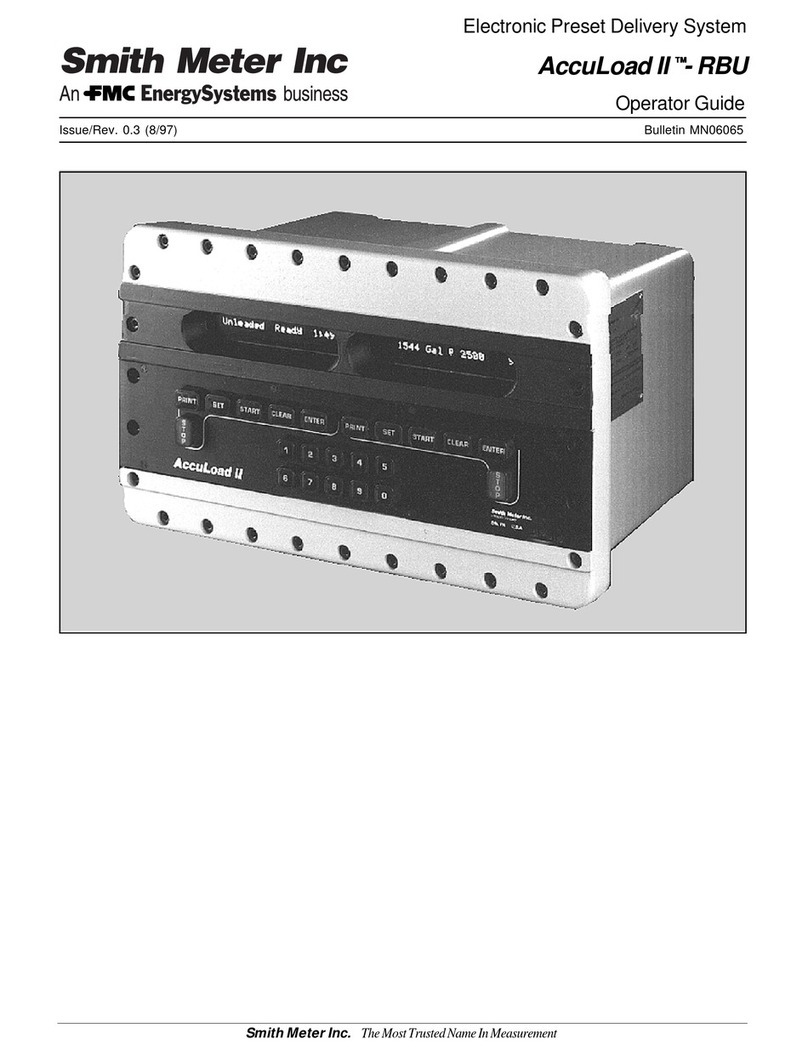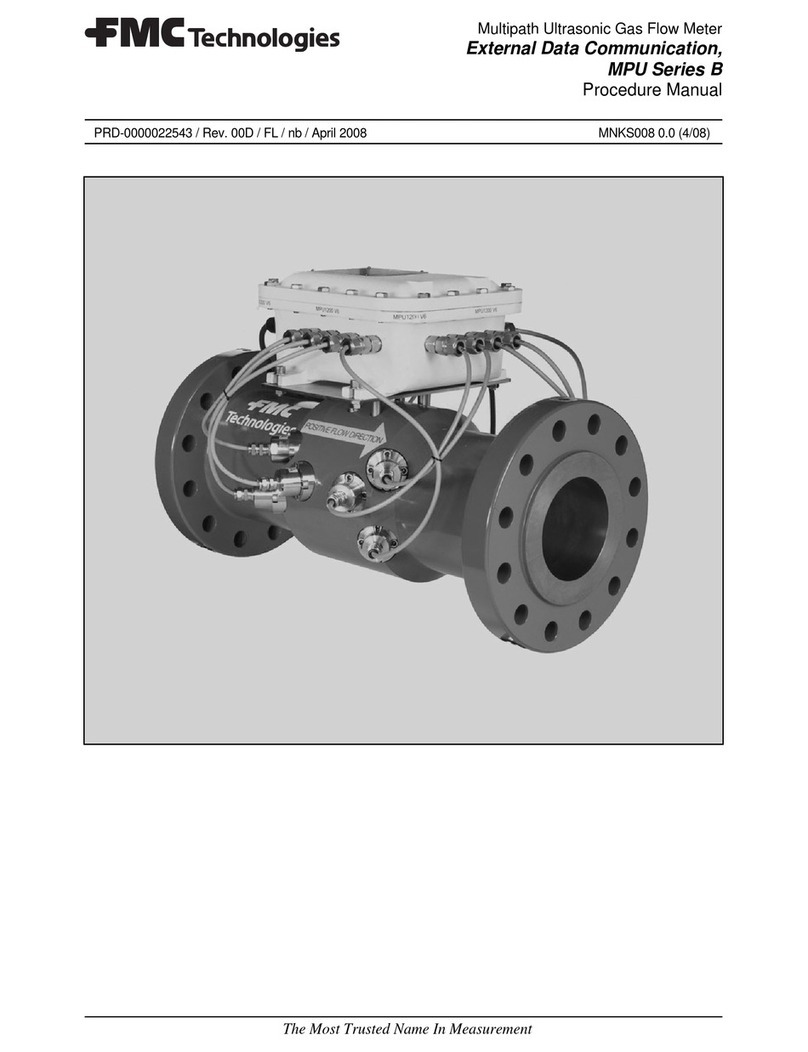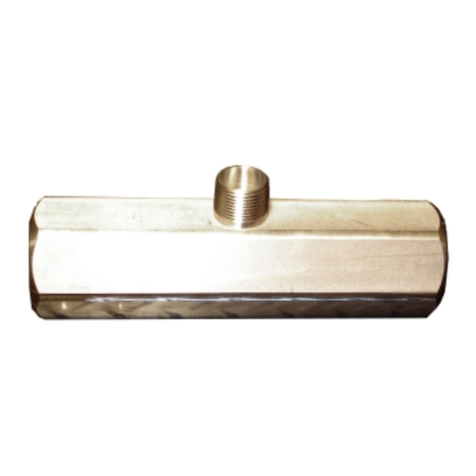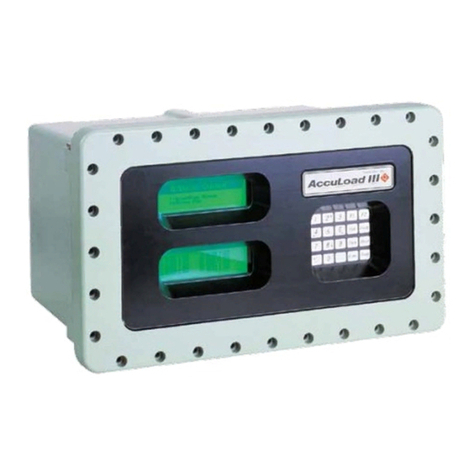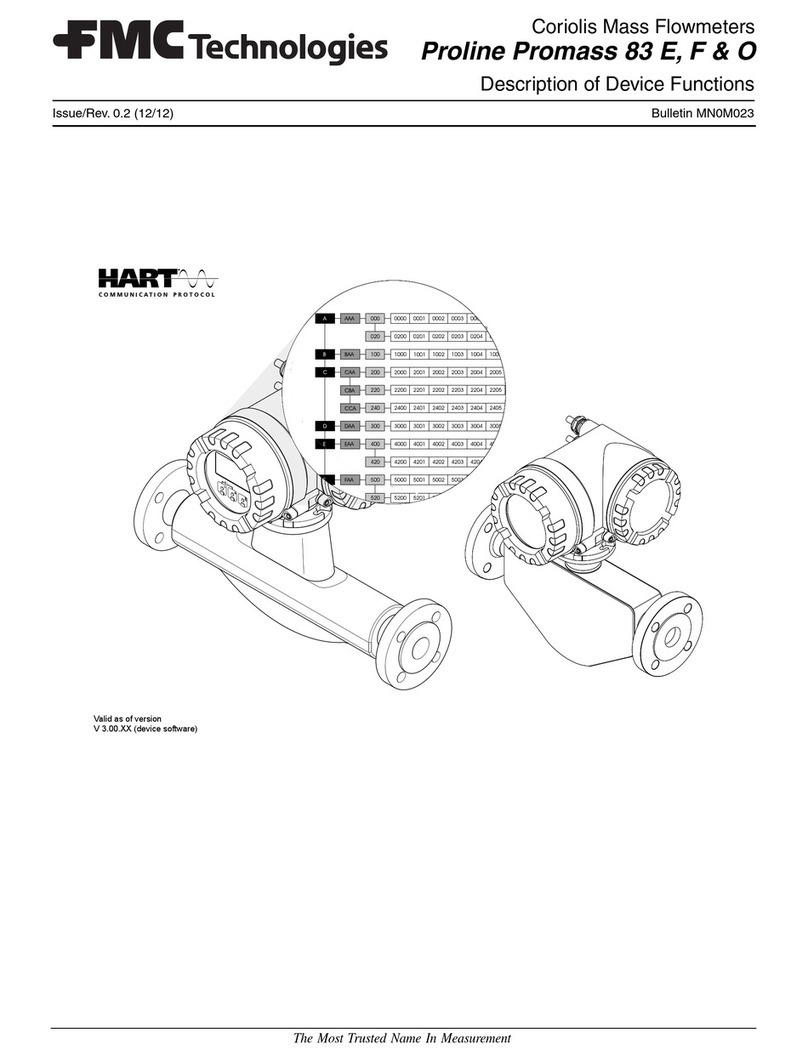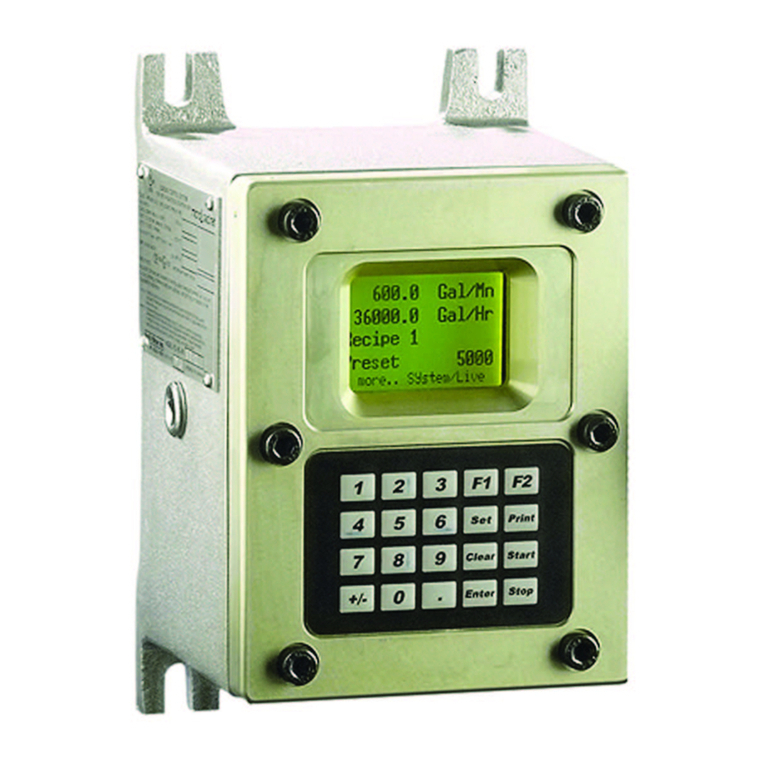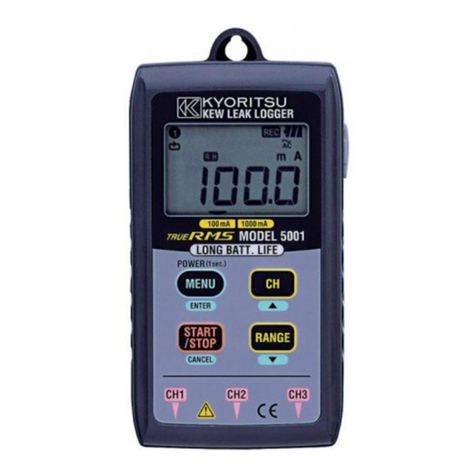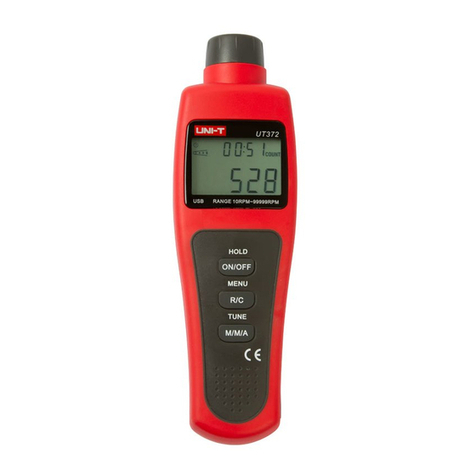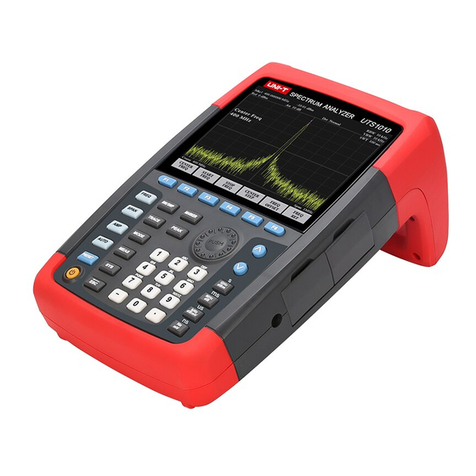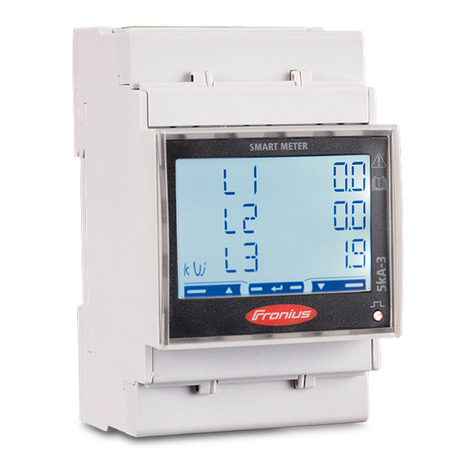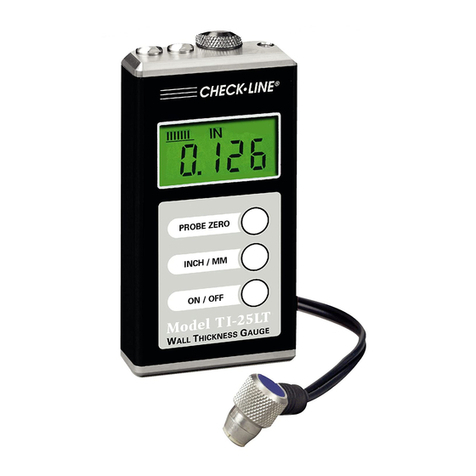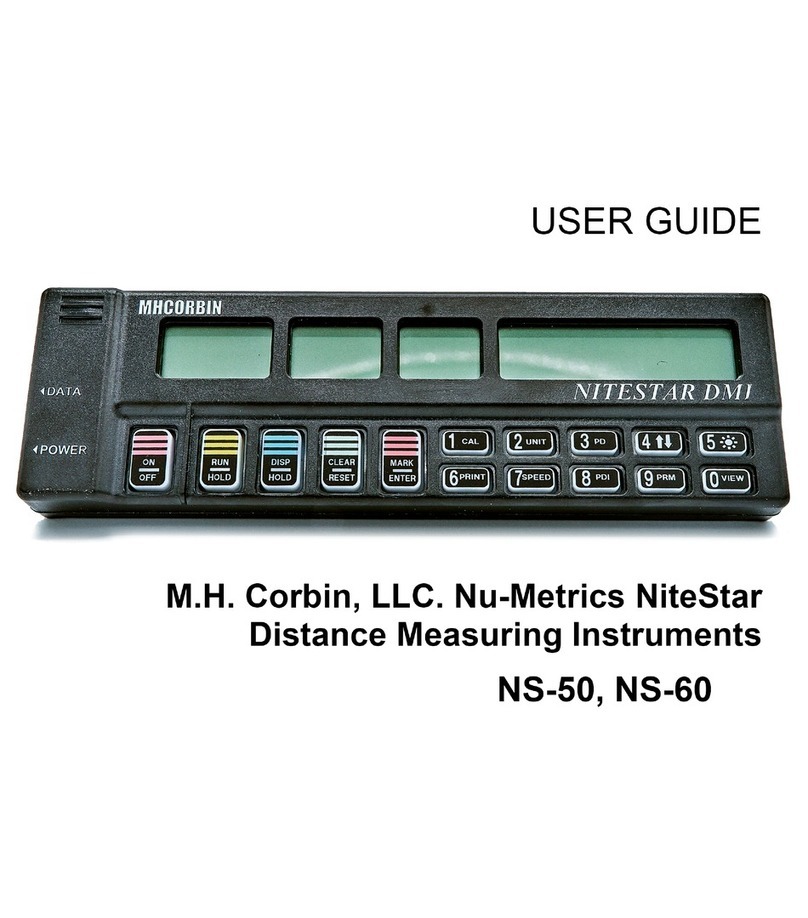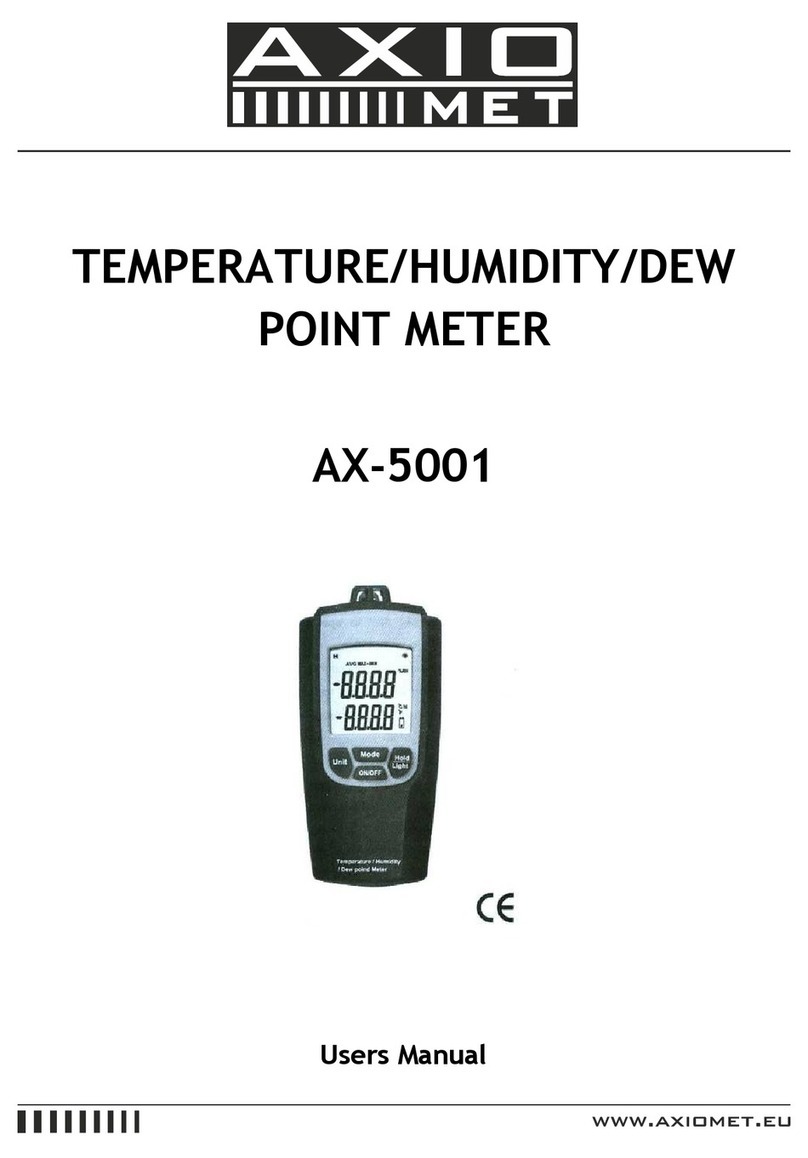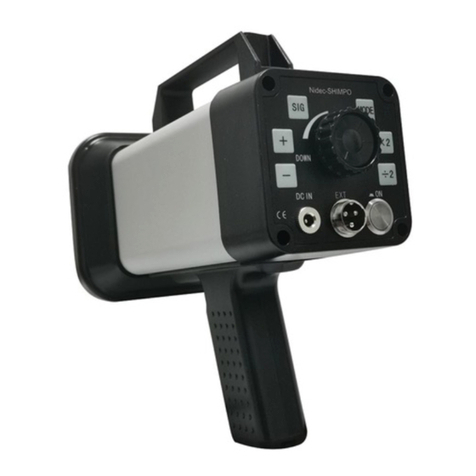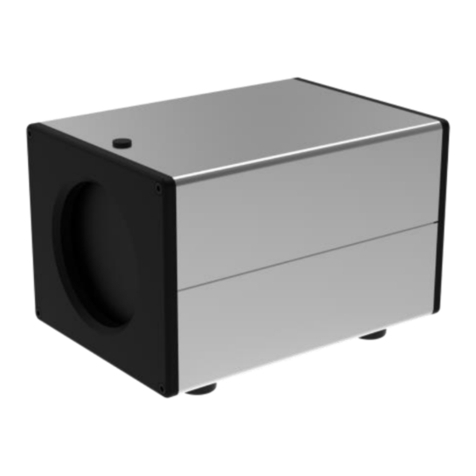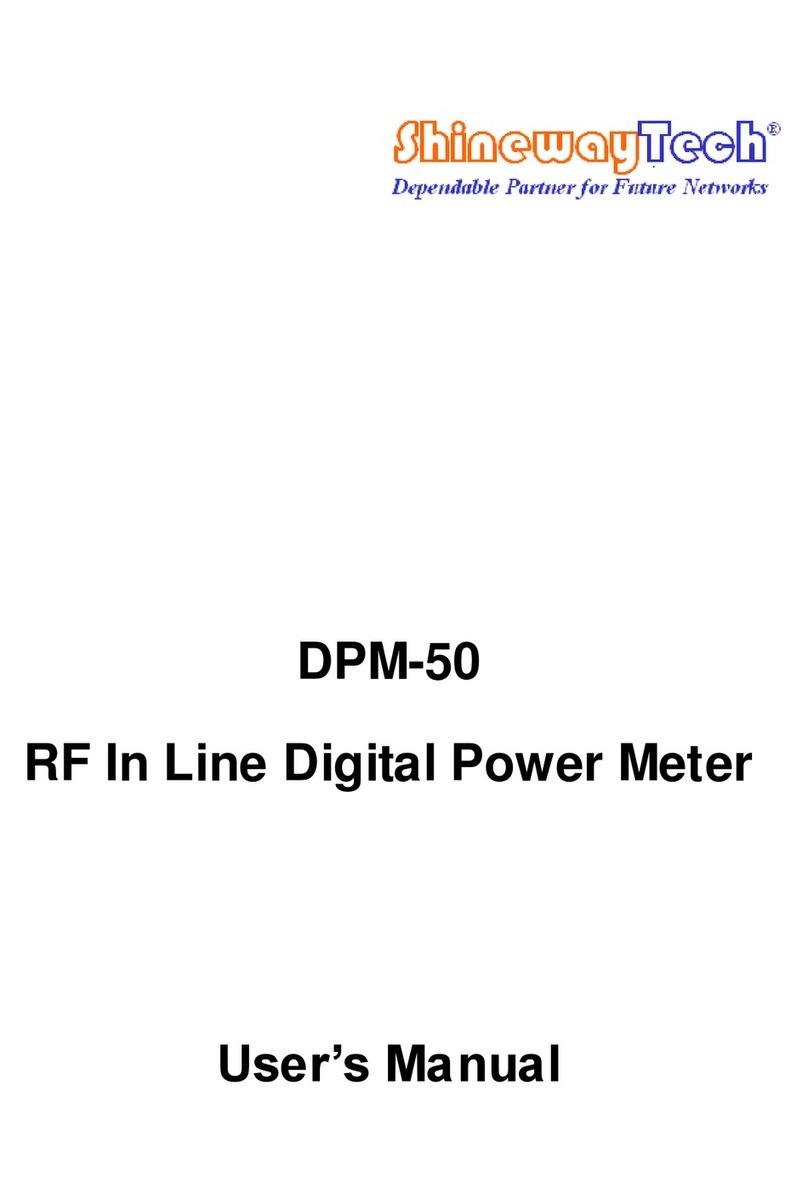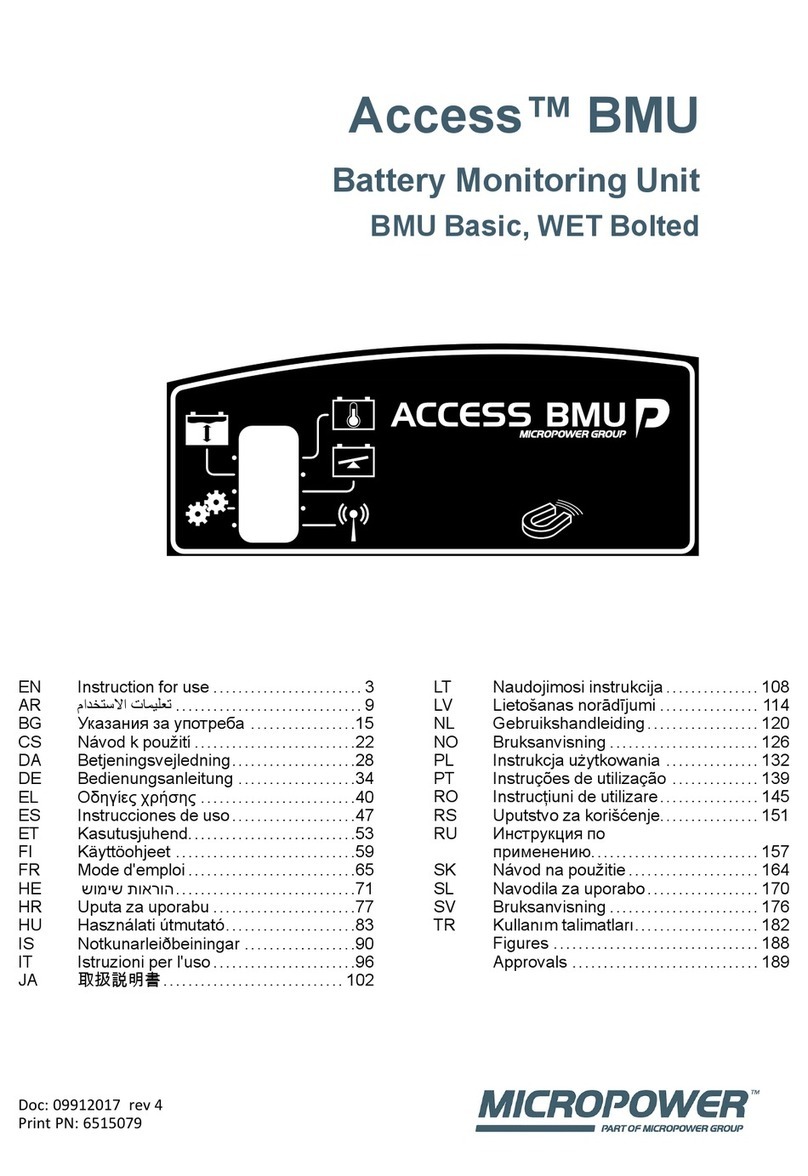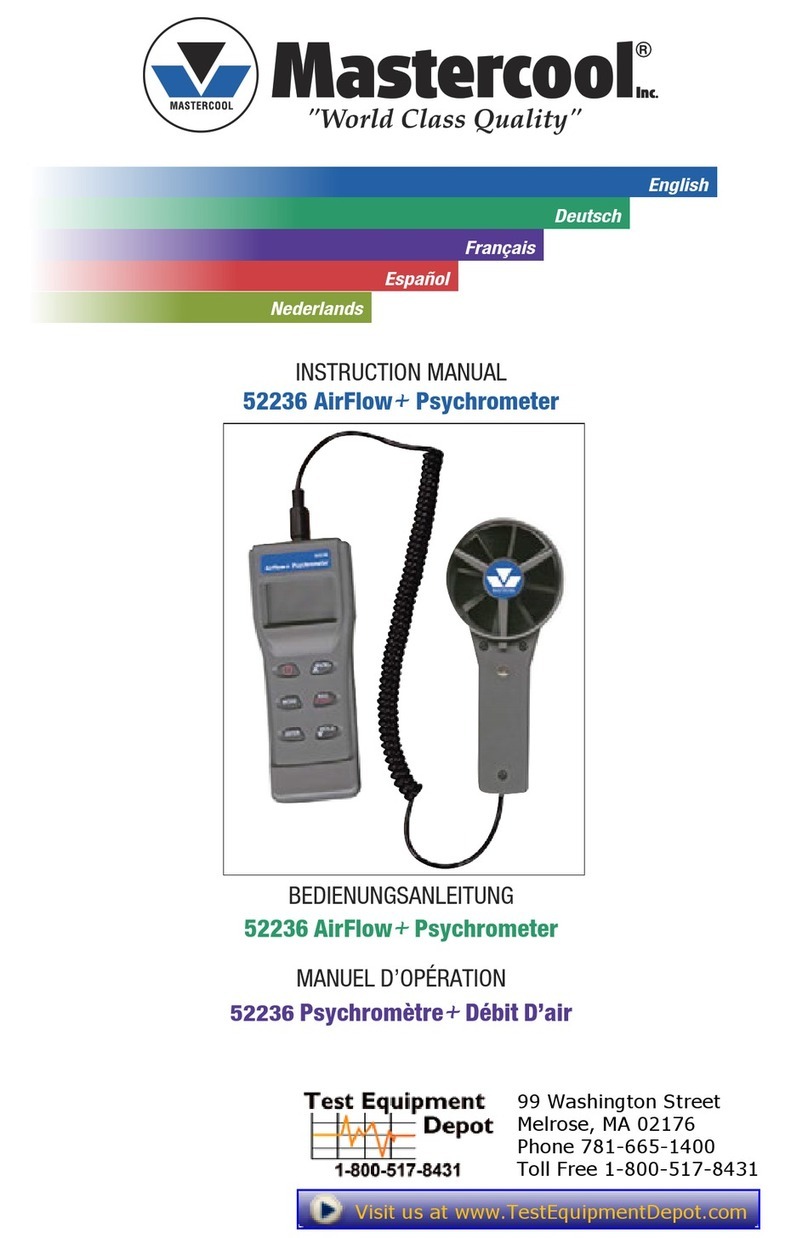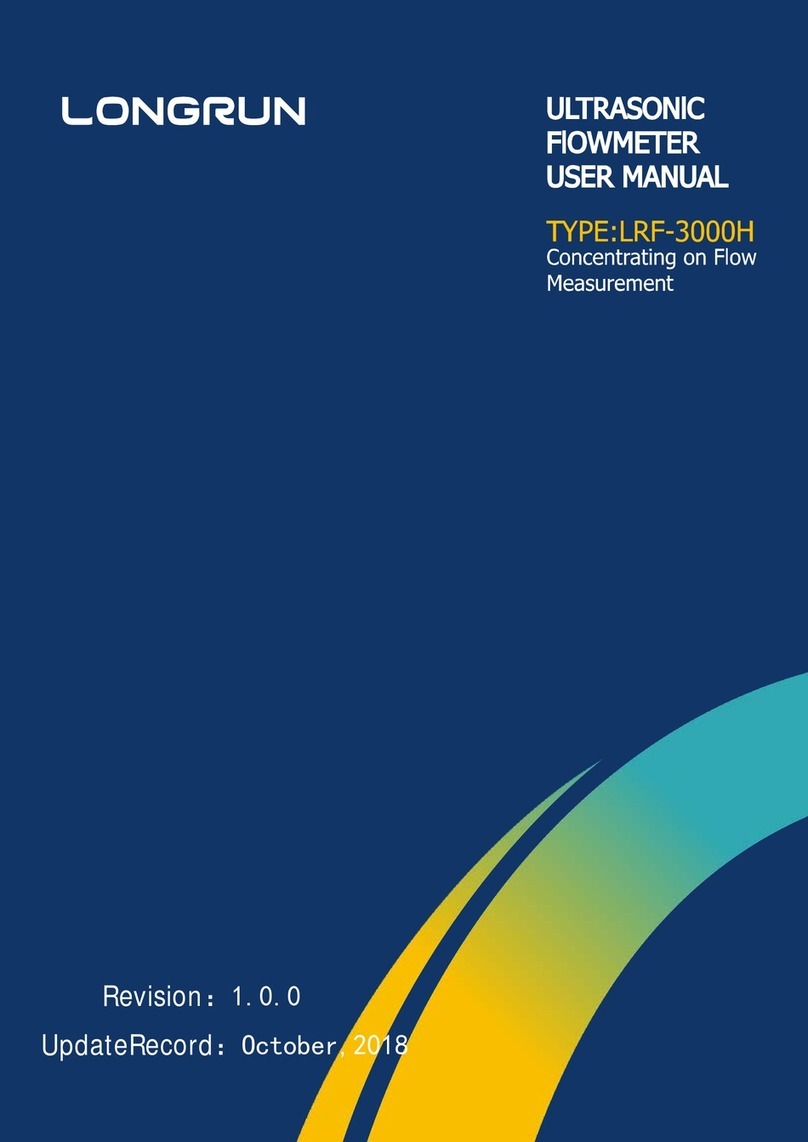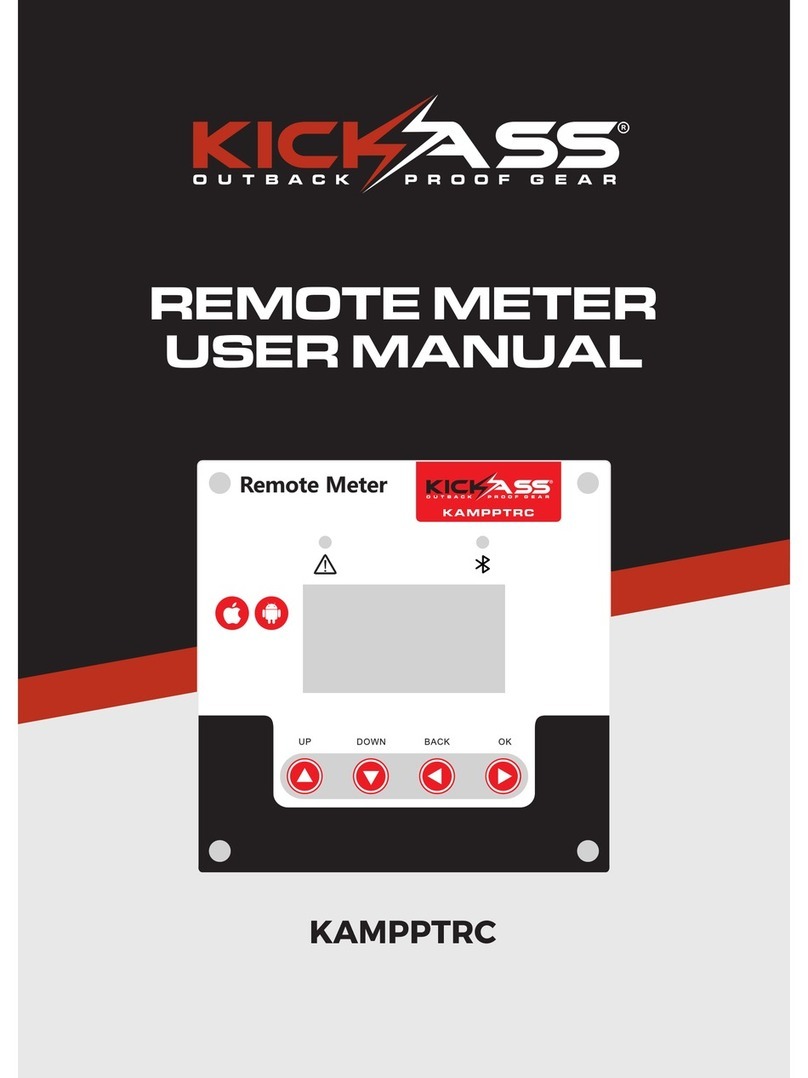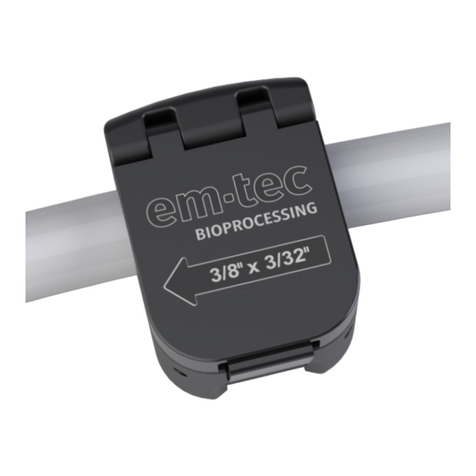
Section I – Introduction
MN06146 Issue/Rev. 0.1 (7/10) 1
Introduction
The purpose of this document is to describe a me-
thod for proving an AccuLoad/meter system with a
volumetric tank prover. Other methods may be ap-
propriate under certain circumstances. It is not poss-
ible to discuss herein all of the procedures, stan-
dards, and knowledge required for meter proving. It
is assumed that the individuals performing these ca-
libration tests are qualified to do so and have par-
ticular familiarity with the following where applicable:
1. Operation of Smith Meter AccuLoad products,
meters, and valves
2. API Manual of Petroleum Measurement, Chap-
ter 4, Proving Systems
3. NCWM Handbook 44, Sections 1 and 3
4. Any additional local codes and standards, both
governmental and private.
For the purpose of this document, the term “AccuL-
oad I” will refer to the original Smith Meter AccuLoad
electronic preset, which was one electronic preset in
one enclosure. The term “AccuLoad II” will refer to
the electronic preset that was released in 1989 and
was manufactured through 2001. The term “AccuL-
oad III” will refer to the electronic presets manufac-
tured from 1999 to the present. The term “AccuLoad”
will be used as a general term when referring to any
of these systems.
The type of proving described will be “gross to
gross”; that is, no temperature correction is made to
the liquid. This is allowed because the temperature
at the meter is considered the same as that in the
tank prover; hence, the corrections for each would
cancel each other. The temperature correction to be
applied will be to the tank prover. It is a function of
the tank material (usually carbon steel or stainless
steel) and the temperature difference between the
proving temperature and the prover’s certified wa-
terdraw calibration temperature (usually 60oF).
Note: When using automated proving mode in AccuLoad III, the
meter factors are calculated using temperature compensation as
described in Section VI.
AccuLoad I
AccuLoad I has the ability to automatically switch to
a unique calibration factor for each of the four differ-
ent flow rate ranges, thus linearizing the meter out-
put. When initially proving an AccuLoad I system,
“lock in” each flow rate and determine a calibration
factor for each. These calibration factors are then
programmed into the AccuLoad and typical flow runs
are executed, including normal low flow start, high
flow, and multi-step valve closure. The goal is to
demonstrate satisfactory correlation between the
displayed volume (AccuLoad register) and volume
actually delivered (Tank Prover).
AccuLoad II and III
The proving procedure for the AccuLoad II and III
systems is similar to that of AccuLoad I, except that
1. AccuLoad II and III use meter factors in lieu of
calibration factors (see Section IV)
2. AccuLoad II and III continuously linearize the
meter output by applying the meter factor at the
flow rate the system is operating. They do not
switch to the factor programmed, but calculate
and use the meter factor for flow rates between
those that are programmed.
The maximum allowable deviation between the Ac-
cuLoad register and the tank prover reading must be
agreed upon and understood by all parties con-
cerned before meter proving operations begin.
How to Use This Manual
This manual is to be used for reference when tank
proving metering systems that contain the AccuLoad
electronic preset.
This manual is divided into seven sections: Introduc-
tion, System Pressure Requirements, Flow Rate Se-
lection, Factor Selection for Preliminary Proving,
Factor Optimizing, AccuLoad III Automated Proving
Mode, and Appendix.
“System Pressure Requirements” describes the back
pressure requirements to prevent cavitation at the
meter during the proving process.
“Flow Rate Selection” describes the flow rates that
are typically used for proving a metering system.
“Factor Selection for Preliminary Proving” describes
the formulas used to establish the preliminary factors
for the AccuLoads. Examples are also provided for
determining factors for turbine meters and positive
displacement meters.
“Factor Optimizing” describes the steps required to
optimize the preliminary factors into final factors that
will be used for loading the product.





















